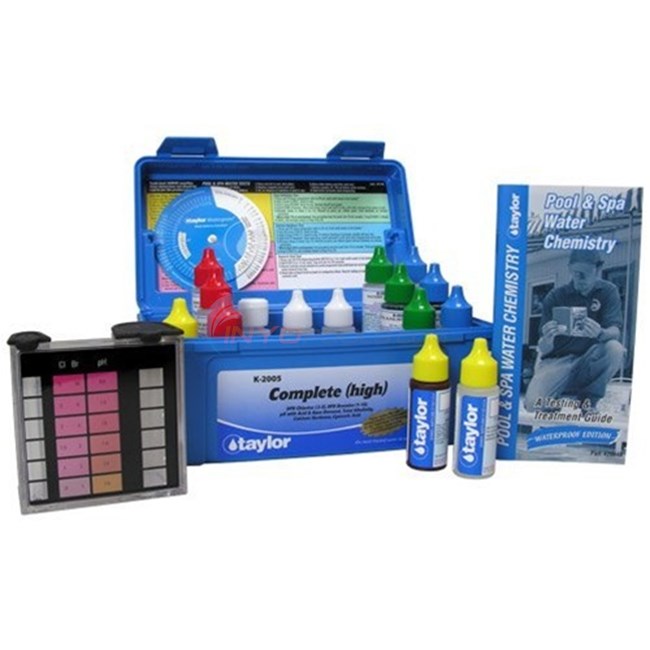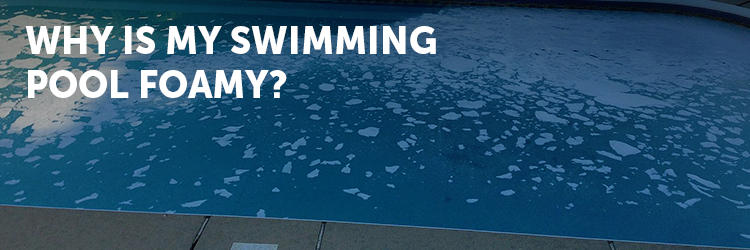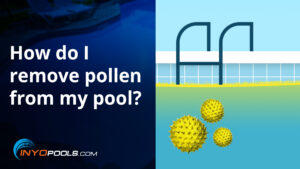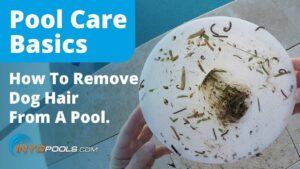One of the most frequently asked questions when it comes to balancing the pool is “Why is my swimming pool foamy?” In many instances, the pool water looks good except for the addition of foam. However, much like anything pool-related, several different variables can contribute to foam production. In this blog article, you learn what causes foam and how to prevent and treat it.
Why Is My Swimming Pool Foamy?

Occasionally, your swimming pool may develop some foam. Determining why your pool is foamy is not as straightforward as you might think. Unfortunately, there isn’t just ONE thing that causes foam. In fact, your pool can become foamy as a result of several different things.
Common causes of foam are:
- Hair care products – shampoo, gel, hairspray, etc.
- Personal care products – body wash, lotions, deodorant, and makeup
- High bather loads
- Laundry detergents or soaps
- Household cleaners not designed for pool use
- Chemical imbalances
- Type of algaecide
In many cases, foaming is indicative of a high organic load in the pool. The source of organic debris ranges from normal bather loads and the products swimmers often carry into the pool such as sweat, lotions, suntan oils, and shampoos.
Additionally, plant and animal material can also be sources for organic material in the pool. This type of build-up is most common in pools with high bather loads. As your water “thickens,” the movement of the water create small bubbles filled with air. These bubbles derive from your return jets or from a simple wind gust.
Another cause of foam in your pool is low calcium. Low calcium in your pool can cause water softness, which in turn, leads to the production of foam. That is why it is extremely important to keep tabs on your chemical levels, specifically your calcium hardness levels.
Lastly, pay attention to the chemicals typically sold in spring opening kits. Adding certain chemicals to a well-maintained pool can cause your pool to foam. This happens because there are no algae in your pool to destroy. Springtime algaecides use surfactants to work and these molecules react with agitation causing froth.
Proactive Prevention
Now that you are familiar with some of the things that cause foam production, let’s discuss how to actively prevent it from happening.
Shower before swimming. Although you only see shower heads in public pool areas, it’s a good idea for every bather to shower before jumping into the pool. Even if you are swimming in your own pool. Showering before swimming removes oils, lotions, make-up, and hair products that contribute to foam production.
Review the type of algaecide you use. First, if you are looking for an algaecide for your pool, look for a non-foaming kind. It’s also important not to over-use algaecide and to follow the directions on the back of the packaging. Polyquat algaecide proves to be the best type to prevent foam. Also, in this case, brands matter. If you can, avoid cheap brands you might find at Walmart.
Regularly test your pool chemicals. The saying, “If you stay ready, you don’t have to get ready,” applies to this scenario. Regularly testing and balancing the chemical levels in your pool is the best deterrence for a foamy pool.
Treatment For Foamy Pools
It is extremely important to treat the foam in your pool as quickly as possible. Untreated foamy water leads to:
- Higher chlorine demand
- Difficulty balancing water
- Scum build-up
- Shorter filter cycles
Algaecides
If your algaecide is causing your pool to foam, don’t fret. In most cases, the foam should clear on its own within one week. However, you should continue to clean and filter your pool as normal. In fact, skimming your pool water also helps. Still, the most important step is to test and balance your water.
 Specifically, check your pH and alkalinity levels. You can verify your chemical levels using our How to Clean a Green Pool article.
Specifically, check your pH and alkalinity levels. You can verify your chemical levels using our How to Clean a Green Pool article.
In addition, we always recommend keeping a test kit around. The Taylor Water Testing Kit, although a little on the pricey side, is one of the most reliable comprehensive professional water testing kits that provide accurate results.
If the foam is still present after adjusting your water levels, we recommend shocking your pool by adding a non-chlorine shock. Again, modesty is key. We recommend using 1 pound of non-chlorine shock per 10,000 gallons. For example, if your pool is 30,000 gallons, you will add three pounds of the shock to your pool.
Calcium Hardness Levels
As mentioned before, an imbalance in your calcium hardness levels can cause your pool to foam. Have you heard the term “soft water”? If someone says their pool water is soft that means it has low calcium hardness.
If after testing your pool water you determine that your pool has low calcium hardness, we recommend adding calcium chloride. Adding calcium chloride raises your calcium hardness levels and prevent more foam. Make sure to follow the recommended dosages on the back of the bottle.
Other Areas To Check
As complex as some swimming pool issues might seem, in some cases the answer is small and right in front of your face. When it comes to determining where the foam is coming from, sometimes it can be as simple as a fitting issue. Here are other areas around your pool you can check:
- Suction side air leak
- Algae
- Water level in the skimmer
- Hoses/ hose clamps
- Plumbing fittings
- Pump strainer O-ring
- Pump strainer lid (check for cracks)
If you’re experiencing foam or bubbles in your swimming pool and nothing in this article pinpoints the root, give us a call. We’d love to help determine why your pool is foaming.












Leave a Reply